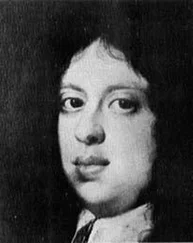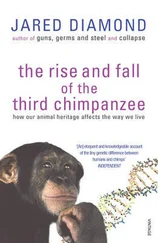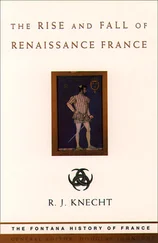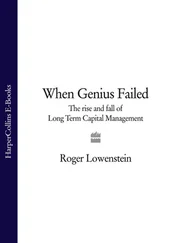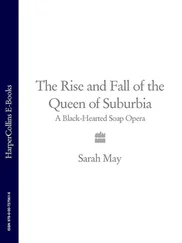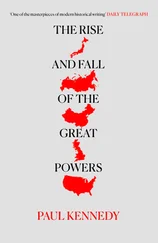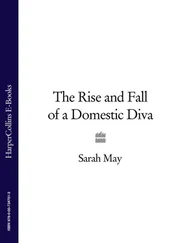To the Florentine merchant, money had a quite extraordinary significance. To be rich was to be honourable, to be poor disgraced. According to that characteristic Renaissance man, Leon Battista Alberti, the philosopher, poet, athlete, painter, musician and architect, who came from one of Florence’s oldest merchant families, 8no one who was poor would ever ‘find it easy to acquire honour and fame by means of his virtues’; poverty ‘threw virtue into the shadows’ and subjected it to a ‘hidden and obscure misery’. Matteo Palmieri, another Florentine philosopher of old merchant stock, agreed with this view. In his opinion only the successful merchant who traded on a large scale was worthy of regard and honour: provided the lowest orders of society earned enough to keep them in food from day to day, then they had enough and should not expect to have more. Gregorio Dati, one of Florence’s international silk merchants, went so far as to say, ‘A Florentine who is not a merchant, who has not travelled through the world, seeing foreign nations and peoples and then returned to Florence with some wealth, is a man who enjoys no esteem whatsoever.’
By common consent it was agreed that the trade from which the merchant’s riches were derived must be both ‘comely and grand’. Quickly made fortunes were highly suspect; so were those made from dealing in ‘ugly trades’, from ‘socially inferior skills’, from ‘low callings, suitable for wage earners’. Trade on an imposing scale and in fine merchandise, however, was not only a credit to the merchant who carried it on but also to the Republic itself which derived such benefit from it.
Having acquired riches the merchant must not be chary of spending them. He must have a fine palazzo and a commodious family loggia , a pleasant country villa and a private chapel. He must provide his family with suitably expensive if not unduly flamboyant clothes, and be ready to provide his daughters with handsome dowries. He must be generous in his donations to the building of churches and convents not only for the glory of God but also for the honour of his descendants and of Florence. If he were rich enough he would gain additional prestige by lending money to the. Republic. Giovanni Rucellai, whose enormous fortune was based on the famous Florentine red dye, the oricello , from which his family derived their name, declared that he had done himself much more honour ‘by having spent money well than by having earned it’; he had also derived deeper satisfaction in spending it, especially the money he had spent on his palazzo, a splendid edifice designed by Alberti. 9
But to be a rich and munificent merchant in a respectable way of business was not in itself sufficient to gain esteem in Florentine society. Ideally a good marriage was also required; so was a tradition of family service to the Republic. Indeed, no one could pretend to high social rank who did not hold or had not held some public office. This was impressed upon the sons of merchants from their earliest years; and a family whose name did not feature on the parchment lists of former Priori , all of whom had been carefully recorded since 1282, was almost beyond the pale. The venerated and enormously rich patrician, Niccolò da Uzzano, kept one of these lists hanging on the wall of his study so that, when the candidature of someone unknown to him was canvassed, he could immediately satisfy himself that he was not a parvenu. 10
The Medici were not parvenus. Yet, compared with many of their rivals, they were not an ancient family either. In later years all manner of legends gained currency.
II
THE RISE OF THE MEDICI
‘Always keep out of the public eye’
IT WAS said that the Medici were descended from one Averardo, a brave knight who had fought under the banner of Charlemagne. This Averardo had once passed through Tuscany on his way to Rome, and in the district to the north of Florence known as the Mugello he had come upon a savage giant, the terror of the poor peasants of the neighbourhood. He had done battle with the monster and had killed him. In the fight his shield had been dented in several places by the heavy blows of the giant’s ferociously wielded mace; and Charlemagne had rewarded Averardo’s bravery by allowing him to commemorate his great victory by representing the dents on his coat-of-arms by red balls or palle on a field of gold – ever afterwards the insignia of the Medici. 1More prosaically, and rather more probably, others maintained that these red balls represented pills or cupping-glasses, the Medici – as their name suggested – having originally been doctors or apothecaries, descendants of a charcoal burner who had moved into Florence from the Mugello. Yet others had it that the balls represented coins, the traditional emblems of pawnbrokers.
What at least was certain was that in more recent years the Medici had been leading lives of quiet respectability in Florence, prospering as the city prospered, and occasionally occupying public office. The first member of the family to become Gonfaloniere was one Ardingo de’ Medici who was elected to that office in 1296. His brother Guccio also became Gonfaloniere three years later and had the distinction of being buried in a fourth-century sarcophagus which was placed outside the black and white octagonal church of San Giovanni Battista, known as the Baptistery. Another Medici, Cosimo’s great-great grandfather, Averardo, was elected Gonfaloniere in 1314; but thereafter the family appear to have suffered a decline. One of Averardo’s grandsons, Filigno di Conte de’ Medici, lamented this decline in a short book of memoirs he wrote for his children. He was pleased to say that the family still owned several small houses in Florence, as well as two palazzi, an inn, and ‘the half of a palazzo with houses round it’ at Cafaggiolo in the Mugello. They were still quite well off, but not nearly as rich as once they had been; while their social position, though’ still considerable, ought to have been higher’. Gone were the days when it ‘used to be said, “You are like one of the Medici”, and every man feared [them]’.
A cousin of Filigno, Salvestro de’ Medici, reclaimed the family’s prestige by being elected Gonfaloniere in 1370 and again in 1378, the year of the riots of the ciompi . Salvestro was known to be in sympathy with the ciompi and for a time his reputation blossomed in the light of their success. But their ultimate failure ruined him; and thereafter the Medici, whose name was now inevitably associated with the party of the people, were regarded with suspicion by many of the leading families of the city.
It was a suspicion which Cosimo’s father, Giovanni di Bicci de’ Medici, had always been anxious to allay. He had not been born rich: the little money left by his own father had had to be divided between a widow and five sons. And having made his own fortune, Giovanni was determined not to put it in jeopardy. His sympathies, like Salvestro’s, were supposed to be with the Minuto Popolo and he consequently enjoyed much popularity with them. Yet he was a man of the utmost discretion, acutely aware of the danger of arousing the Florentines’ notorious distrust of overtly ambitious citizens, anxious to remain as far as possible out of the public eye while making money in his rapidly expanding banking business.
He enjoyed the reputation of a kind man, honest, understanding and humane; yet no one could mistake the worldly-wise shrewdness in his hooded eyes nor the determined set of his large chin. He was never eloquent, but in his talk there were occasional flashes of wit which were rendered all the more disarming by the habitually lugubrious expression of his pale face. Although his riches had been increased by the handsome dowry which his wife, Piccarda Bueri, had brought into the family, he lived with her and his two sons, Cosimo and Lorenzo, in a modest house in the Via Larga before moving to a slightly larger but still unpretentious house in the Piazza del Duomo not far from the unfinished cathedral of Santa Maria del Fiore. 2Giovanni would have preferred to avoid public life altogether, as many minor merchants contrived to do; he would ideally have liked to divide his time between his house in Florence and his country villa, between his office in the Piazza del Duomo and his bank in the Via Porta Rossa 3near the present Mercato Nuovo. 4But in Florence, as one of his grandsons was to say, rich merchants did not prosper without taking a share in the government.
Читать дальше

